Leaving behind the innovative year of 2022, here we are in 2023.
This year, keeping up with the latest trends will be more crucial for developers if they want to be relevant to the ever-growing demands for fast, secure, and scalable software applications.
What does this mean for you? If you are a backend developer,
The backend framework is a quintessential part of application development for countless businesses around the globe. Without superior backend technologies, scaling, functionality, and intuitiveness of web and mobile applications are impossible, and even a slight change in the backend technologies can have a significant impact on the entire industry.
Truth be told, having good knowledge of several backend technologies is definitely a plus for any backend developer. As there are many backend technologies available, it becomes increasingly difficult to make a good choice without knowing the pros and cons of each option beforehand.
To begin with, let’s take a look at the top backend development frameworks, what they’re used for, their benefits and drawbacks, and how you can use them to advance your career.
What are the top backend development frameworks in 2023-24
The Power of Ruby on Rails
Ruby on Rails is a popular and powerful backend development framework. It’s used by millions of people around the world, and for good reason: it offers a lot of benefits for web developers. Popular for its ease of use, Rails offers tremendous value for backend developers looking to create robust backends in an easy-to-use format while allowing beginner developers to quickly get up to speed with the framework.
Pros
- Ease of use
- extremely versatile tool kit
- Frequent updates and bug fixes
- Built-in security measures: user authentication and session management
- Scalable capabilities for handling large projects with ease
Cons
- Performance time
- Continuous changes
- Less room for mistakes
Companies that use Ruby on Rails in their tech stacks
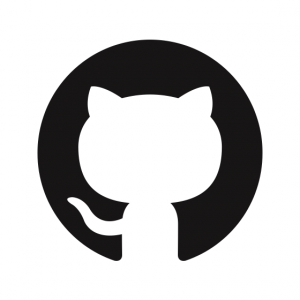
Github

Shopify

Airbnb
Discover the beauty of Laravel
Laravel is a PHP framework that values beauty. It is an open-source framework that follows the MVC architectural pattern. Known for its ease of use, it is designed to make the development process more efficient with clean code and elegant syntaxes to provide a wonderful development experience. It’s widely used for creating robust, high-performance web and mobile applications due to its various built-in command-line tools for completing complex tasks, which makes it a great choice for developers looking to start their careers as backend developers.
Pros
- High security and robust deployments with shortened development times
- built-in access control system and enhanced security
- Model-View-Controller (MVC) Architecture
- Seamless automated testing
- Smooth database migration
Cons
- There is no built-in support function.
- Lack of expertise in the community
- Heavy documentation
Companies that use Laravel in their tech stacks

Disney

Warner Bros
![]()
The NY Times
Take a bite out of CakePHP
CakePHP is another open-source PHP framework for backend development that is built around all essential tools to enable faster web application development. It’s also known for making it easier for developers to develop, deploy, and maintain applications, with much easier upgrades to the latest version of the framework without having to rewrite a lot of code.
The CakePHP and Laravel frameworks are powerful and popular frameworks, and they often share steep preferences among developers looking for an easy-to-use framework. But since CakePHP has been around for longer than Larave, it has attracted a bigger and stronger community of developers. Yet it’s always a good idea to evaluate both frameworks and choose the one that best fits the requirements of the project.
Pros
- Code reusability
- Rapid application development
- structures the code beautifully into the MVC architecture.
- Uses ORM for performing DB operations, which makes it easy to write queries.
- Rest API is supported natively.
- Above all, it’s open source.
Cons
- Updating default routes to update URLs is the biggest issue.
- Poor documentation in comparison to other frameworks makes learning difficult.
- Migration is time-consuming and demanding.
- Users felt difficulties migrating from version 2 to version 3 of Cake PHP.
Companies that use CakePHP in their tech stacks
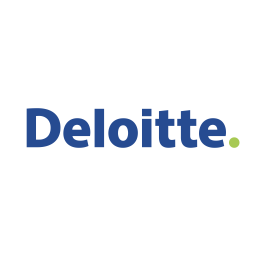
Delloite
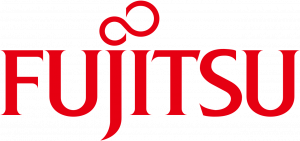
Fujitsu

SeatGeek
Exploring Django’s perfection
Django is a free and open-source Python-based framework that is compatible with major operating systems and databases. It has a significant number of advantages that have made it one of the most popular technologies used for software development. One of the major benefits of Django is its Representational State Transfer (REST) framework, which is used for building APIs.
The Django framework allows web developers to have the full-stack capability with Python. Using Django’s REST framework, you can build a ready-to-use API in just three lines of code. It is considered exceptionally user-friendly, secure, clean, and efficient.
Pros
- Get regular updates, an open-source nature, and a responsive community.
- A developer-friendly framework that supports the MVP model
- The best sets of documentation among the open-source frameworks
- flexible enough to handle machine learning and complicated data analysis.
Cons
- Django is monolithic in nature and may not be the right fit for smaller projects.
- It has a steep and deep learning curve for novice developers.
- Django doesn’t use any conventions, which leads to slower progress over time.
Companies that use Django in their tech stacks

NASA


Boeing
Quickstart with Spring Boot
Spring Boot is a Spring-based, microservices-ready framework that allows developers to write production-grade backend web applications in Java. The framework provides all the features of Spring, yet it is easier to use than Spring, which allows developers to divvy up the load for proper handling of requests made by users across devices and platforms in less time.
Spring Boot has gained considerable success since its introduction in 2014, and it has shown all the potential to be one of the best backend frameworks that developers count on in 2023 for performing backend web development tasks.
Pros
- Creates self-contained, ready-to-use backend web applications.
- Auto-configures libraries in Spring and other third-party backend frameworks.
- It makes it convenient to find and add dependencies required for a particular project.
- Comes with Spring Boot CLI (Command Line Interface), which allows developers to write Groovy applications in a programming language that simplifies development.
- requires neither code generation nor XML configuration.
Cons
- Create a lot of additional but unused dependencies that increase the deployment file size.
- Not suitable for large projects
- There are many complex JVM (Java Virtual Machine) issues with high code execution times.
Companies that use Spring Boot in their tech stacks

Udemy
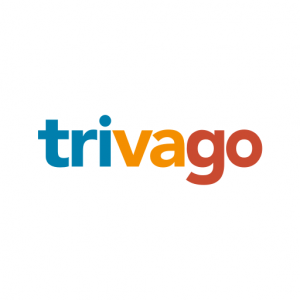
Trivago
Flask: A Python microframework for building web applications
Flask is a lightweight, microframework framework that can be used to implement web applications and backend API applications as well. It is designed for web development in the Python language, and it differs largely from frameworks like Django (A highly popular Python web framework).
Despite the fact that it is a microframework and does not have as many features as Django, the major upside is that, if you don’t need those features, it’s much easier to just make a Flask app, so you don’t have to waste time and energy removing unnecessary dependencies and files. Additionally, micro-framework applications come with a lot less code bloat, and can always be scaled up with additional tools as needed.
Installation
Install the latest version of Python, or at least use a version >= Python 3.7.
Pros
- There is a built-in development server, and a fast debugger is provided.
- Secure cookies are supported.
- Templating using Jinja2.
- Request dispatching using REST.
- Support for unit testing is built-in.
Cons
- Not suitable for developing large-scale applications.
- Offer a limited set of tools.
- There is no built-in administration interface.
Companies that use Flask in their tech stacks

Samsung

Airbnb

Uber
Look into the most scalable Node.js
Node.js is an open-source, cross-platform environment, that runs on the V8 Javascript engine. Developers often choose Node.js for building backends for web applications since it runs JavaScript on the server. In fact, nearly one-third of professional developers place Node.js as their first choice for their programming language of choice, according to StackOverflow’s Developer Survey.
It is lightweight and efficient and has a large ecosystem of packages and modules that can be easily integrated into projects. Some of the popular frameworks built on Node.js for backend development are Nest.js., Express.js, and Meteor.js.
Pros
- Popular for enhancing productivity and developer efficiency
- Large and influential developers’ community
- Allows using of JS code on both the front and back ends.
- Easy scalability for modern applications
Cons
- Offer CPU-bound difficulties when handling large computing tasks
- Its asynchronous Programming Model makes it difficult to comprehend and maintain the code.
- There are not enough experienced Node.js developers to meet the high demand.
Companies that use Node.js in their tech stacks
![]()
Netflix
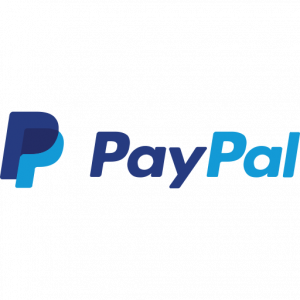
PayPal

What is Nest.js?
Nest.JS is a framework that helps build Node.JS server-side applications. Built on top of Express.JS, Nest.JS offers multiple functionalities and out-of-the-box APIs. Developers can leverage the features of Nest.JS to build applications with less code.
As the Nest framework is entirely in TypeScript, developers with no experience in backend development but experience in front-end development can easily use Nest. JS. Nest.JS also offers a good structure and CLI tools for beginners to get started. With the help of a single command, developers can scaffold a whole new feature.
Pros
- Allow developers to build highly scalable and testable applications.
- Nest.JS divides the files into multiple modules, helping developers focus on a single feature at a time
- Nest.JS provides the module, controller, service, and testing pile to get started. Also, multiple templates and boilerplates are available for different projects.
- A large number of libraries implement Typescript, Model-View-Presenter (MVP), and integrated Object-Oriented-Programming (OOP), Function-Point (FP), and Functional-Reactive-Programming (FRP) principles.
Cons
- Nest.JS depends heavily on Angular’s architecture.
- can be difficult for new developers with angular backgrounds.
- considered a more expensive framework option than others.
Companies that use Nest.js in their tech stacks
![]()
Adidas

Capgemini

Decathlon
What is Express.js?
Express is a compact Node.js web application framework that provides broad features for building web and mobile applications. With a lot of minimally constructed HTTP helpers, it is used to build single-page, multi-page, and hybrid web applications. It is used by developers who do not require a lengthy, costly development process. It’s a layer built on top of Node.js that helps manage servers and routes and is great for building APIs and mobile applications.
Pros
- Express was designed to make it simple to create APIs and web applications.
- It saves a lot of coding time—almost by half and still makes web and mobile applications efficient.
- A wide express JS community to support new developers entering the field of web development.
- Express makes it easier, as it identifies the exact part where bugs are.
Cons
- There is no structural way to organize things, hence the code becomes non-understandable.
- There are so many issues with callbacks.
- The error messages that will come are challenging to understand.
Companies that are using Express JS in their tech stacks
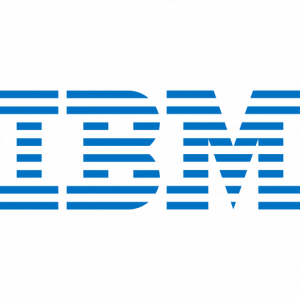
IBM

eBay

Uber
Meteor
Meteor is a JavaScript web framework that lives up to its name. Developed in JavaScript, it is a full-stack platform for building modern web and mobile applications. Meteor is getting back in the game after some slowdown. Among the features of Meteor are a tool for building connected-client reactive applications, a set of curated packages from the Node.js community, and a build tool, and is ready to rock the development world.
It enables real-time functionality, dynamic imports, front-end-back-end connectivity, and API protection, while allowing you to develop in one language, JavaScript, in all environments: the application server, web browser, and mobile device.
Pros
- It embraces the ecosystem, bringing the best parts of the extremely active JavaScript community to you in a careful and considerate way.
- Uses data on the wire, meaning the server sends data, not HTML.
- Meteor provides full stack reactivity, allowing your UI to seamlessly reflect the true state of the world with the minimal development effort.
Cons
- Absence of native server-side rendering
- Too difficult and time-consuming
- There are no reactive joins.
Companies that use Meteor in their tech stacks

IKEA
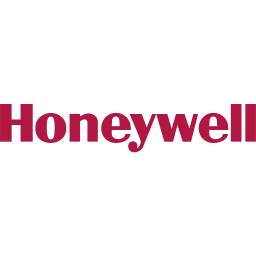
Honeywell

Qualcomm
How Do You Choose the Right Backend Technology?
Choosing the right backend technology would be the first and most important step before creating a web application. Since the backend is responsible for how the site works, updates, and changes,
While for most projects different technologies can be used interchangeably, some may not allow this. That’s why it’s important that you make well-informed choices instead of relying on common myths.
Here are the key factors to take into account when selecting a reliable framework:
- Examine the compatibility of the framework’s features.
- Verify whether the framework effectively fulfills all the demands or lacks some of them.
- Learn about the various plugins that are included with the framework.
- Ensure the framework makes it simple to maintain and upgrade the project.
- All security features are available.
- Comes with excellent documentation and friendly community support.
- Make sure that the chosen stack fits your budget and timeline!
To summarise
This article has touched on all the popular frameworks for backend development; we’ve covered their features, pros, and cons for both experienced and new developers. We hope that with the information given in this article, you will be able to find the perfect backend framework for your next project.
Best of luck…
To learn more, subscribe to our newsletter and get information delivered directly to your inbox.






Add comment